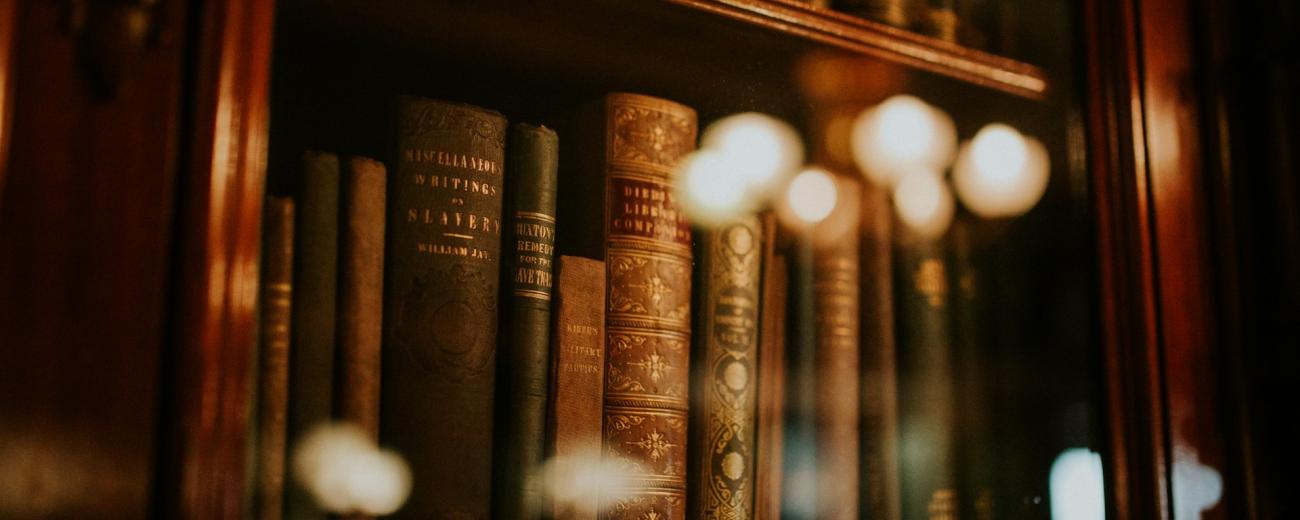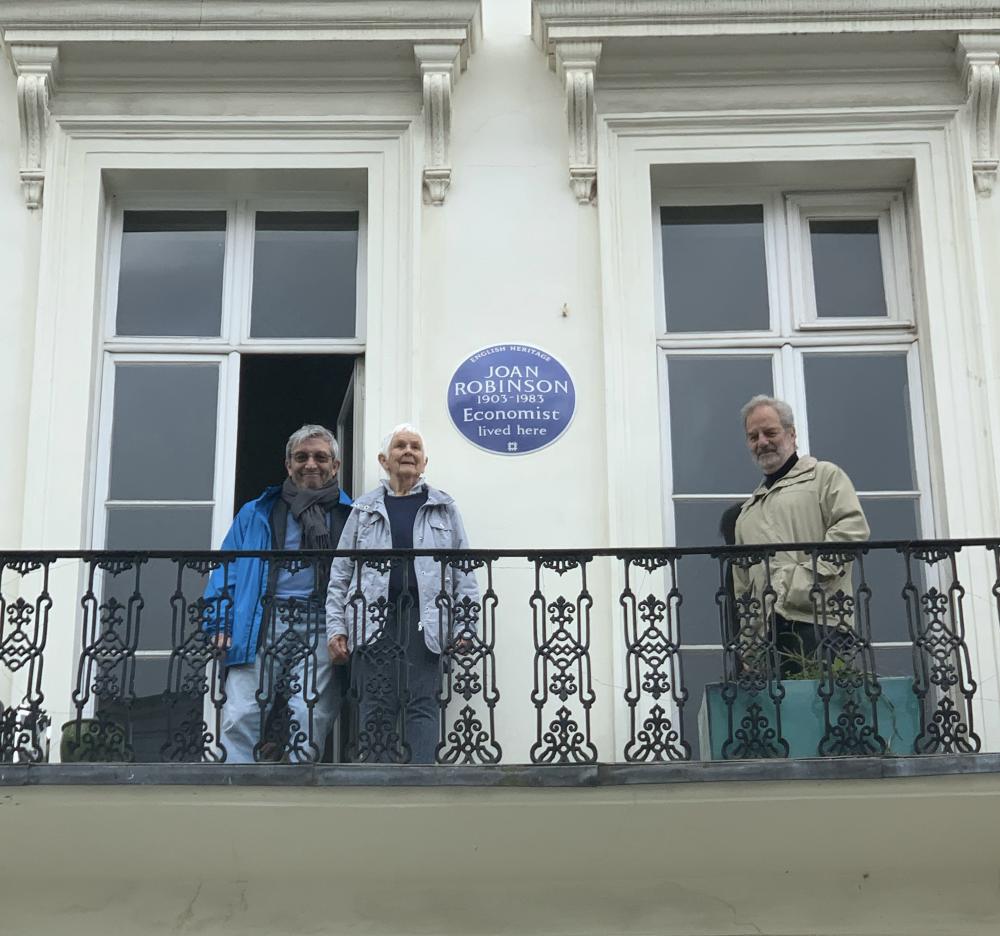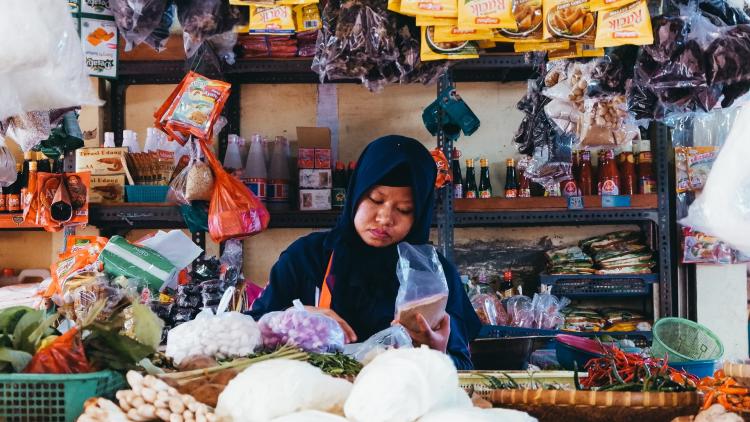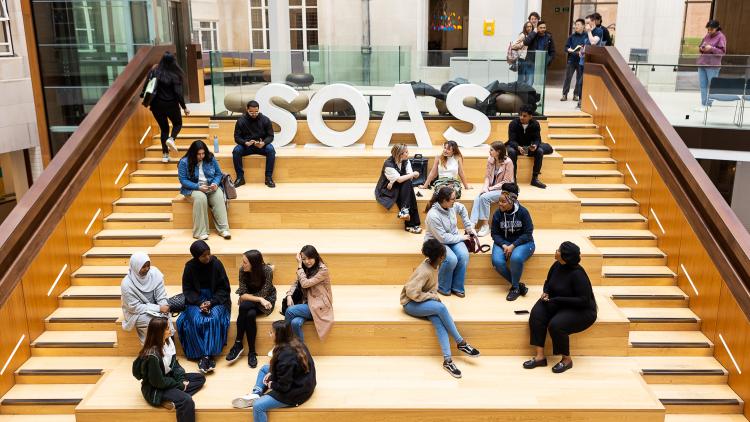SOAS Economist assists in unveiling plaque to Joan Robinson


On Tuesday 9 April, English Heritage unveiled another of its characteristic blue plaques on the house at 44 Kensington Park Gardens, in the Notting Hill district of London, where the famous economist Joan Robinson (1903-1983) lived, while attending St. Paul's School (she was then Joan Maurice).
Later it was from this house that she went to marry Austin Robinson, a fellow economist who she had met while studying economics at Cambridge. The plaque was unveiled by her daughter Barbara Jeffrey.
Robinson's fellow-economists were represented at the unveiling by the Italian political economist Riccardo Bellofiore and Jan Toporowski, Professor of Economics and Finance in the Economics Department at SOAS.
After her marriage and travels to India, Joan Robinson settled in Cambridge where she became friends with perhaps the greatest Cambridge economist of the last century, John Maynard Keynes. She distinguished herself with major contributions to nearly all branches of economics.
At the end of the 1930s she came under the influence of the Polish economist Michał Kalecki and remained a staunch advocate of his theories up to the end of her life.
In particular she encouraged the writing of an intellectual biography of Kalecki, a major research undertaking that was brought to SOAS two decades ago and completed in 2018, by Jan Toporowski. Jan Toporowski found unpublished correspondence between Joan Robinson and Kalecki. This correspondence was finally published in a recent special issue of the Cambridge Journal of Economics that Toporowski edited.
Like Kalecki, Joan Robinson made major contributions to development economics, virtually from the start of her career as an economist. After her marriage with Austin she travelled with him to India, where she undertook research on the economic and fiscal links between the Princely States and British India. She had a strong interest in China, which she visited eight times. She was a keen supporter of the Communist revolution there and Mao Zedong’s efforts to remodel society as well as modernising the economy.
Towards the end of her life she was more critical of the Maoist excesses of the Cultural Revolution. It was not only her development economics that resonates with SOAS today. She was also a serious critic of the mainstream economic theories of her time who would have felt at home among the non-conformist political economists at SOAS.
Header image credit: Clarisse Meyer via Unsplash.
About the author
Jan Toporowski is Professor of Economics and Finance at SOAS - University of London. His research is concentrated on monetary theory and policy, finance, and the work of Michał Kalecki.



